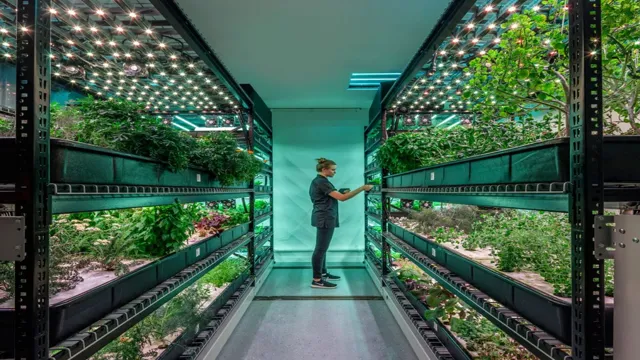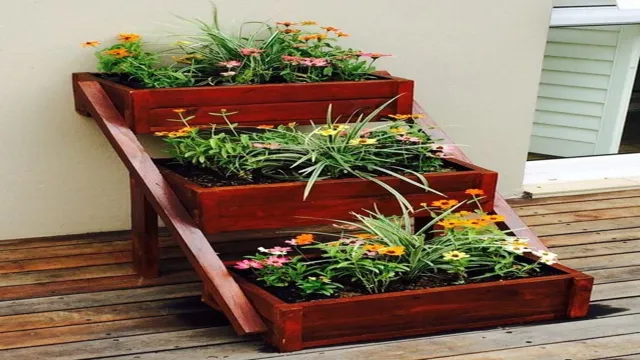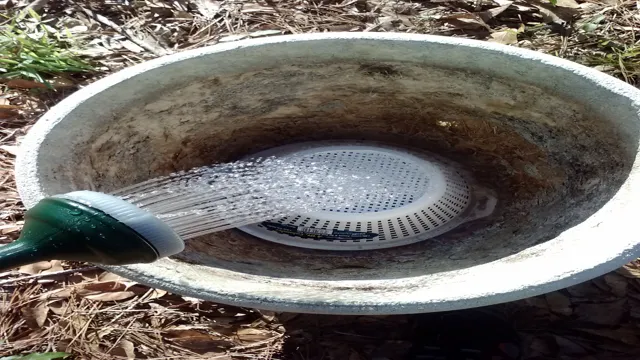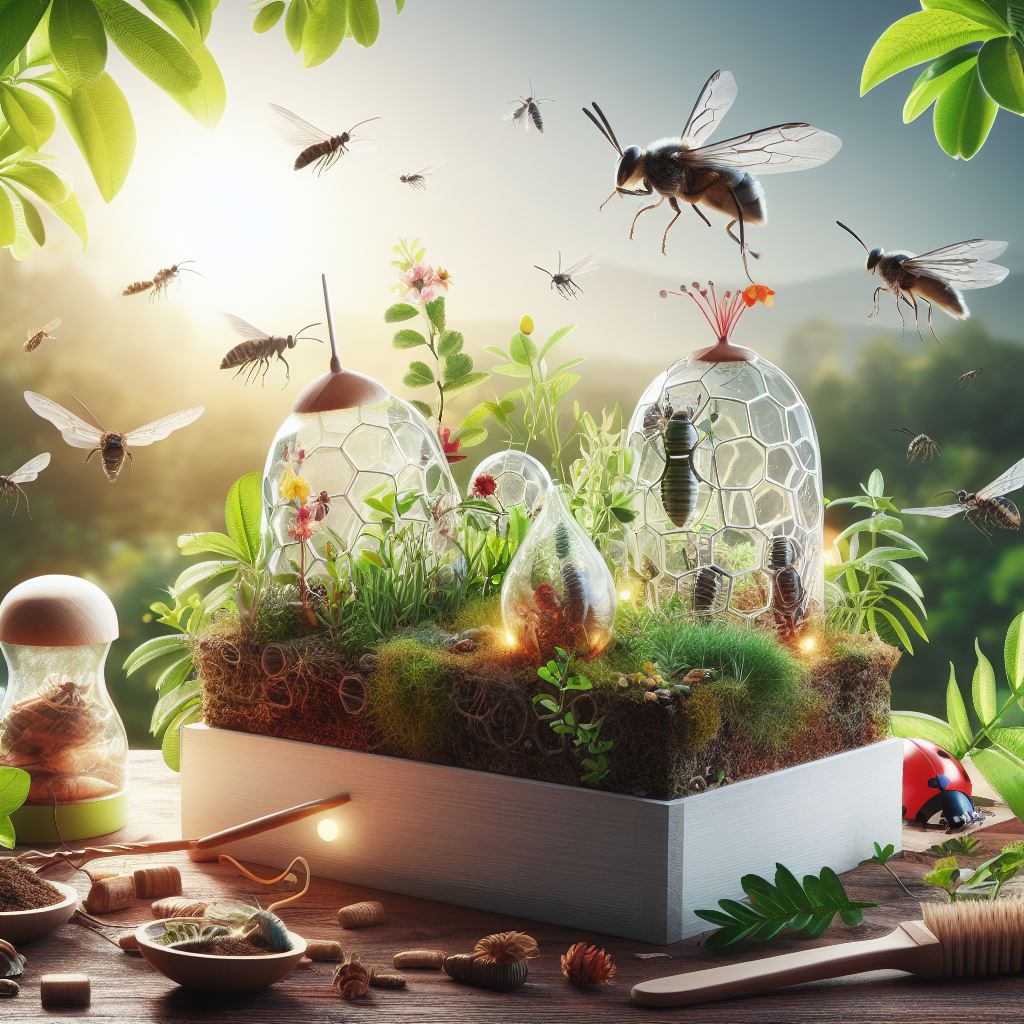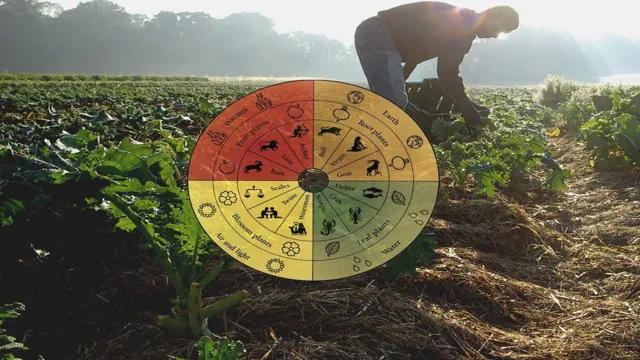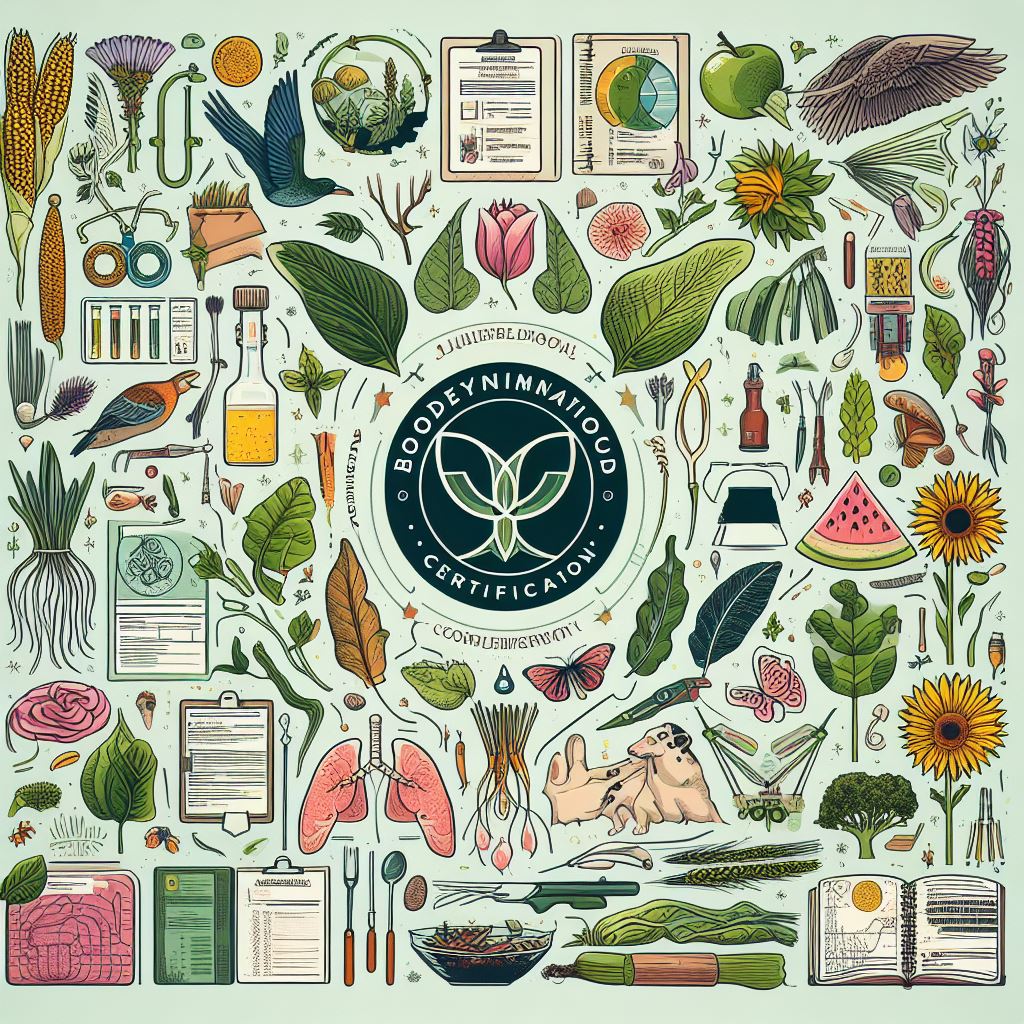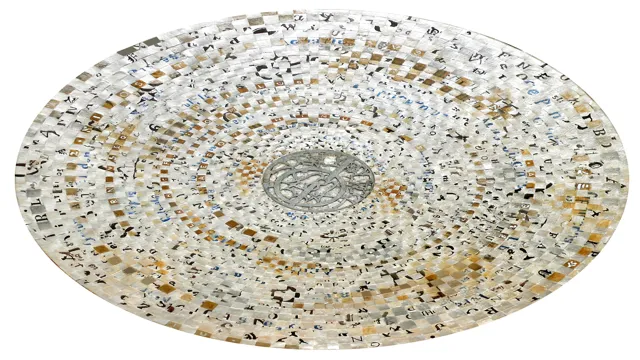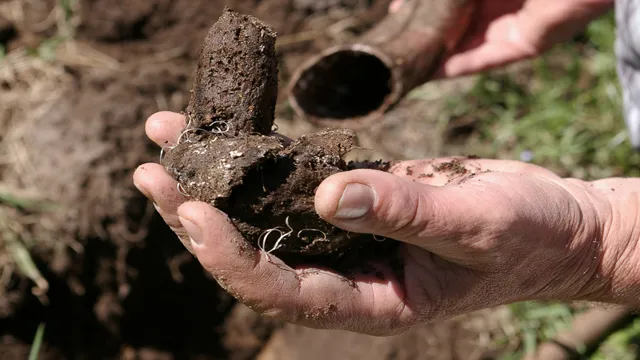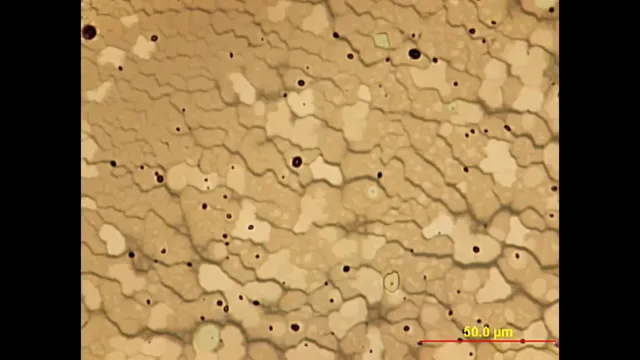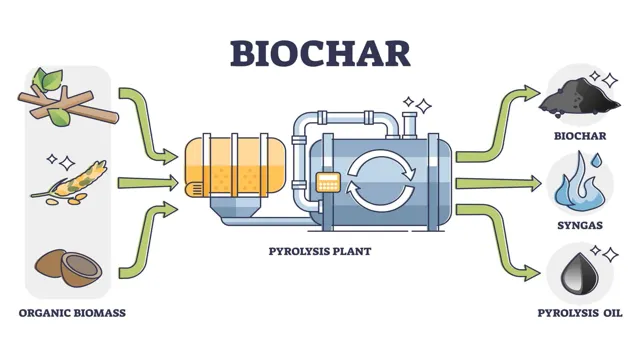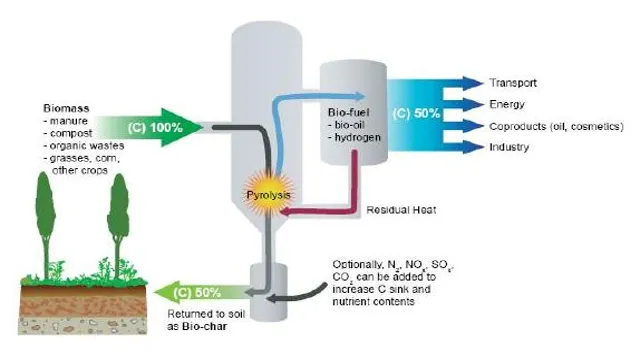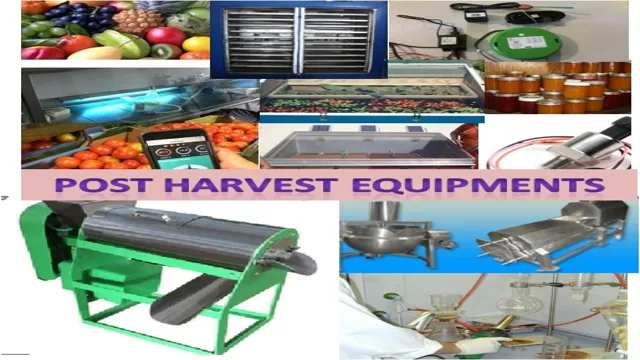Green thumbs are no longer exclusive to outdoor spaces. Indoor farming, a revolutionary approach to agriculture, is lighting up homes and urban spaces alike. The age-old art of farming is undergoing a remarkable transformation, swapping out the sun’s rays for LED lights and open fields for compact indoor spaces.
This cutting-edge trend in agriculture, aptly termed ‘Illuminating Indoor Farming,’ is rapidly gaining momentum and reshaping our understanding of where and how we grow our food. As we delve deeper into this exciting world of technologically advanced farming, we’ll unearth the benefits, challenges, and the incredible potential it holds for a sustainable future. Hold onto your plant pots, as we journey into this blossoming frontier of indoor farming.
Understanding Indoor Farming
Illuminating Insights: Decoding Indoor Farming Lighting As the sun sets on traditional agricultural practices, a new dawn emerges within the confines of urban landscapes – indoor farming. This innovative cultivation method is a hotbed for sustainable farming practices, with indoor farming lighting playing a starring role. Indoor farming lighting is the artificial sun that nourishes the crops grown in indoor farms.
It is not just about ‘lighting up’ the plants; it’s a science that involves tailoring specific light recipes to optimize plant growth, yield, and nutritional content. The technology used, known as horticultural lighting, employs different spectrums, intensities, and durations of light to mimic the ideal conditions for photosynthesis. Think of it as a personalized spotlight for each plant, catering to their individual growth habits and needs.
From promoting leaf expansion in lettuce to enhancing the flavor of basil, indoor farming lighting is a game-changer in the realm of agriculture. The advent of LED technology has revolutionized indoor farming lighting, offering energy-efficient and customizable solutions. These ‘smart lights’ can be adjusted according to the plant’s life cycle, offering the right intensity and spectrum at each growth stage.
Indoor farming lighting is the cornerstone of urban agriculture, paving the way for a future where fresh, locally-grown produce is available year-round, irrespective of weather conditions or geographical location. By harnessing the power of artificial light, we are stepping into a new era of sustainable agriculture, where the sun never sets.
What is Indoor Farming
Indoor farming, a revolutionary approach to agriculture, harnesses the power of technology to cultivate crops within enclosed spaces. The star of this high-tech show? Indoor farming lighting. This isn’t your grandma’s porch light; it’s a sophisticated system designed to mimic and optimize natural sunlight.
These lighting solutions provide the essential spectrum of light that plants need to photosynthesize, grow, and thrive, all while indoors. With indoor farming lighting, the sun never sets on agricultural productivity, bringing the power of perpetual daylight to the field, or rather, the room.
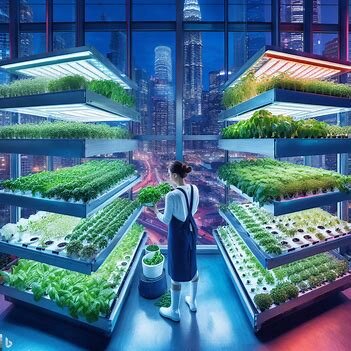
Benefits of Indoor Farming
Embracing the innovative technique of indoor farming is a game-changer in the world of agriculture. One of its notable advantages is the efficient utilization of indoor farming lighting, improving crop yield and growth rate. This technology, not only transforms the crop production cycle into a predictable and controllable process, but also eliminates the reliance on weather conditions, leading to year-round production.
This revolutionary farming method, illuminated by specially engineered LED lights, offers a sustainable and efficient solution for food production – a brilliant fusion of technology and agriculture.
Role of Lighting in Indoor Farming
Lighting: The Lifeblood of Indoor Farming Farm life has taken a futuristic turn with indoor farming, where the sun is replaced by the glowing hum of artificial lights. Within this new-age farming technique, indoor farming lighting is no less than the heart that keeps the operation alive and thriving. Unlike traditional farming, indoor farming is not at the mercy of weather patterns or daylight hours.
However, the absence of natural sunlight puts immense importance on the role of indoor farming lighting. It is the torchbearer that guides the indoor crops towards healthy growth and bountiful harvests. The precision and control provided by artificial lighting are truly game-changing.
It allows farmers to tailor the light spectrum to the specific needs of each plant, optimizing growth rates and nutritional content. Blue and red lights are particularly beneficial, stimulating photosynthesis and encouraging flowering and fruiting, respectively. Moreover, indoor farming lighting gives the power to control the ‘day’ and ‘night’ cycles, thus manipulating the plant’s internal clock.
This means farmers can accelerate or delay harvests based on market demands, a feat unheard of in traditional farming. In essence, indoor farming lighting is the wizard behind the curtain, orchestrating the symphony of growth within the farm’s confines. It is a silent yet potent force that makes indoor farming not just possible but also profitable and sustainable.
So, while the concept of indoor farming may seem plucked straight from a science fiction novel, it is the power and potential of indoor farming lighting that truly illuminates this revolutionary farming technique.
Importance of Proper Lighting
The vitality of indoor farming lighting cannot be overstressed as it serves as the lifeblood of your plants’ growth and productivity. This illuminating elixir mimics the sun, facilitating photosynthesis and setting the stage for a thriving indoor agricultural show. It’s not just about flipping a switch; it’s about fine-tuning the light spectrum to create a symphony of growth.
A well-orchestrated lighting setup can incite an indoor farming revolution, turning a simple hobby into a bountiful harvest. Therefore, understanding and implementing the correct indoor farming lighting is not just bright, it’s brilliant.
Types of Lights for Indoor Farms
Illuminating the myriad possibilities of indoor farming lighting, it’s clear that one size doesn’t fit all. From High-Intensity Discharge (HID) lights, known for their high yield and efficiency, to the energy-saving Compact Fluorescent Lights (CFLs), the options are as varied as the plants they nurture. LED lights, on the other hand, are a sustainable choice, offering a spectrum of light that can be tailored to specific plant needs.
Not to forget, induction lights, celebrated for their longevity and consistent output. So, whether you’re cultivating delicate herbs or robust vegetables, there’s a light that shines for every indoor farm.
Adjusting Light for Plant Growth
Perfecting indoor farming lighting is a fine art, a delicate dance of illuminating the path for plants to grow robustly. The right lighting sets the stage for optimal photosynthesis, directly influencing plant health, growth rate, and yield. Indoor farmers, you’re not just lighting managers, you’re maestros conducting a symphony of photons.
So, let’s waltz through the science behind this radiant spectacle and learn how to adjust it for optimal plant growth. After all, the magic of indoor farming lighting holds the key to nurturing your indoor garden’s full potential. So, let’s shine a light on this captivating subject, shall we?
Choosing Indoor Farming Lights
Navigating the sea of indoor farming lighting options can sometimes feel as daunting as finding your way through a dense forest with only a flickering lantern. But fear not, intrepid indoor farmer, we’re here to illuminate your path. When embarking on the journey of indoor farming, your choice of lighting can make the difference between a lush, thriving harvest or a disappointing yield.
Your plants, in their photosynthesis process, crave more than just any light; they yearn for the perfect spectrum, intensity, and duration that closely mimic the sun. Fundamentally, there are three primary types of indoor farming lighting: Fluorescent, High-Intensity Discharge (HID), and Light-Emitting Diodes (LED). Each has its strengths and weaknesses, and the right choice ultimately depends on your specific farming needs and goals.
Fluorescent lights are your trusty steeds – economical, effective, and perfect for seedlings and greens. For those seeking a brighter blaze, HID lights offer high efficiency and intensity, ideal for supporting larger plants and higher yields. Meanwhile, the LED lights stand as the technological titans, boasting energy efficiency, longevity, and a customizable light spectrum.
Understanding your plants’ needs and aligning them with the right indoor farming lighting solution is an art in itself. But with this knowledge in hand, you’re now better equipped to step confidently into the spotlight of your indoor farming adventure.
Factors in Selecting Lights
Choosing the perfect indoor farming lighting involves more than just picking a bulb off a shelf. It’s a strategic process that considers various factors such as light spectrum, intensity, and duration. These elements have a direct impact on the photosynthesis process, ultimately affecting your crops’ growth and productivity.
Therefore, it’s crucial to opt for a lighting system that offers the right balance of these factors, ensuring your plants receive optimum light exposure. Remember, a well-lit farm is a fruitful one, so invest wisely in your lighting solutions!
Top Lighting Options Reviewed
In the realm of indoor farming, lighting plays a quintessential role. Selecting the right type of indoor farming lighting can drastically impact your yield, as well as the health and quality of your crops. From high-intensity discharge lights to fluorescents, LEDs, and beyond, the market is brimming with options.
This review aims to shed light (pun intended) on the top contenders in the indoor farming lighting sector, providing you with the necessary insights to make an informed decision. Illuminate your indoor garden with our expertly-reviewed choices and watch your plants thrive like never before.
Maintaining Indoor Farming Lights
The Art of Keeping Your Indoor Farming Lights in Prime Condition Indoor farming offers an array of benefits, including year-round crop production, efficient use of space, and less exposure to pests. However, to ensure a successful yield, your indoor farming lighting must be in optimal condition. This is the backbone of a thriving indoor farm, as it significantly influences plant growth and productivity.
Maintaining your indoor farming lights isn’t as daunting as it might seem. It involves regular cleaning to remove dust and debris that could decrease their efficiency. Simultaneously, routinely inspecting the lights for any signs of damage or wear and tear is essential.
Any problematic lights should be replaced immediately to prevent stunting plant growth. Another critical aspect of maintenance is ensuring your lights are at the correct height. Adjusting the distance between your plants and the lights promotes even growth.
If they’re too close, the plants may suffer from light burn; too far, and the light may not reach the plants effectively. Lastly, consider the lifespan of your lights. Different types of lights – LED, fluorescent, incandescent – have varying lifespans and energy efficiencies.
LED lights, for instance, are more energy-efficient and last longer than traditional lighting options. However, they still need to be replaced after a certain period to ensure maximum productivity. In essence, maintaining your indoor farming lighting is a combination of regular checks, proper positioning, and timely replacements.
This commitment not only keeps your indoor farm flourishing but also makes the process more cost-efficient and sustainable in the long run.
Frequently Asked Questions
What is the importance of lighting in indoor farming?
Lighting is crucial in indoor farming because it directly influences the growth and development of plants. Indoor farming lights provide the necessary light spectrum for photosynthesis, aiding in faster growth and higher yields.
What type of lighting is best for indoor farming?
The best type of lighting for indoor farming depends on the specific needs of the crops. However, LED lights are commonly used due to their energy efficiency, longevity, and ability to produce a broad spectrum of light.
How does indoor farming lighting differ from natural sunlight?
Indoor farming lighting is designed to mimic the beneficial aspects of natural sunlight. Unlike sunlight, indoor lights can be controlled to provide optimal light intensity, duration, and spectrum that are ideal for plant growth, regardless of weather or time of year.
Can indoor farming lighting affect the taste and nutrition of crops?
Yes, indoor farming lighting can affect the taste and nutrition of crops. Certain light spectrums can enhance the production of plant compounds that contribute to taste and nutritional value.
How can I optimize the use of lights in my indoor farm?
To optimize the use of lights in your indoor farm, it’s crucial to understand the light requirements of your specific crops. You should consider factors like light intensity, duration, and spectrum. Also, regularly maintaining your lights and replacing them when necessary will ensure they continue to function effectively.
Are there any environmental impacts of using lighting for indoor farming?
While indoor farming lighting can be more energy-intensive than natural sunlight, using energy-efficient lights like LEDs can significantly reduce this impact. Additionally, indoor farming can reduce water usage and eliminate the need for harmful pesticides, making it a more sustainable farming method overall.
Conclusion
In conclusion, indoor farming lighting is the sun, moon, and stars of the indoor farming universe. It’s the photographic genius that captures the ‘growing’ moments, the maestro that orchestrates the symphony of photosynthesis. Much like a seasoned director on a film set, it sets the stage, cues the actors, and calls ‘action’ to the drama of growth.It is, quite literally, the power behind the ‘green’ screen. Without it, our indoor farming story would simply remain in the dark. So here’s to indoor farming lighting – the luminary lumens that light our way to a sustainable and food secure future.
